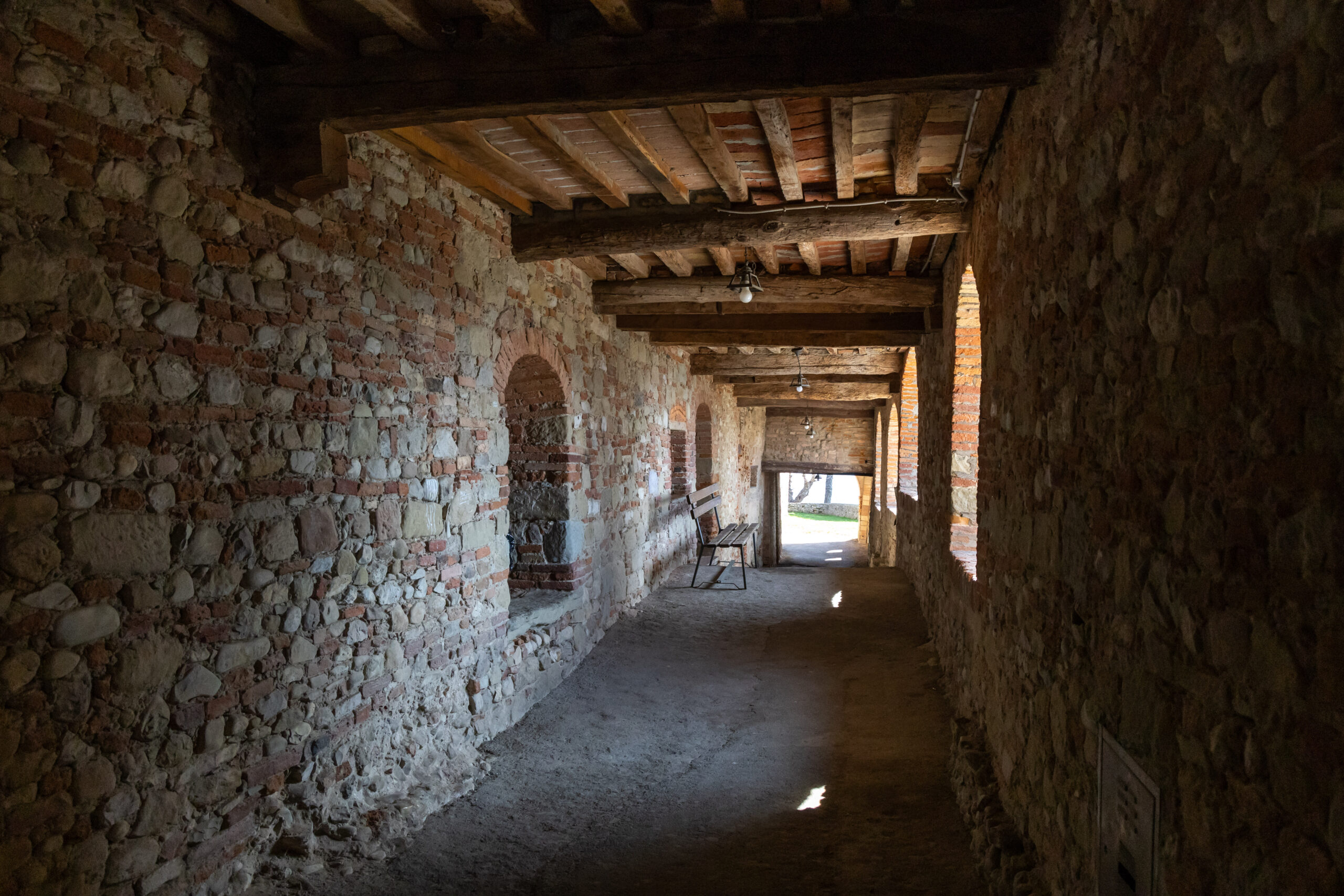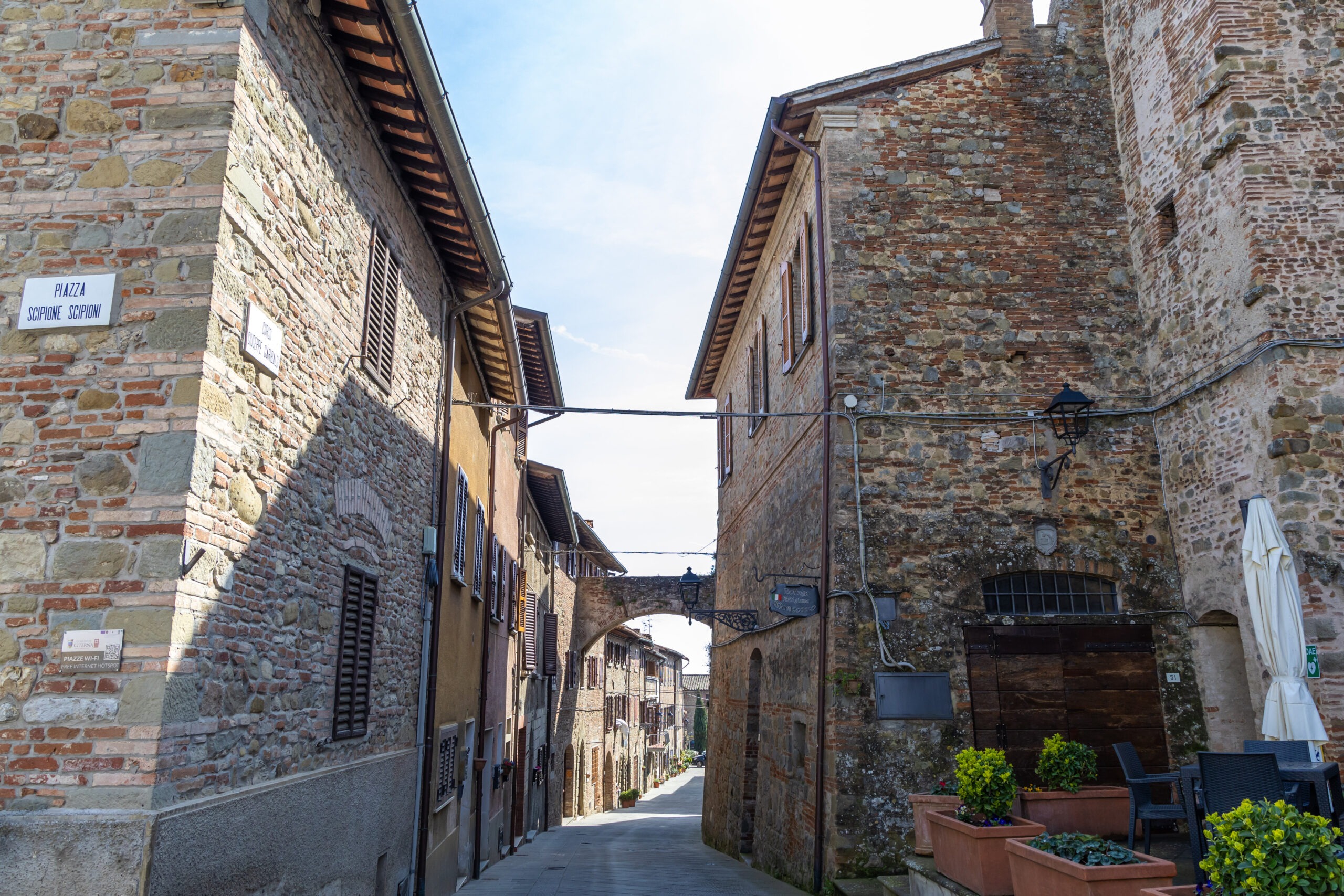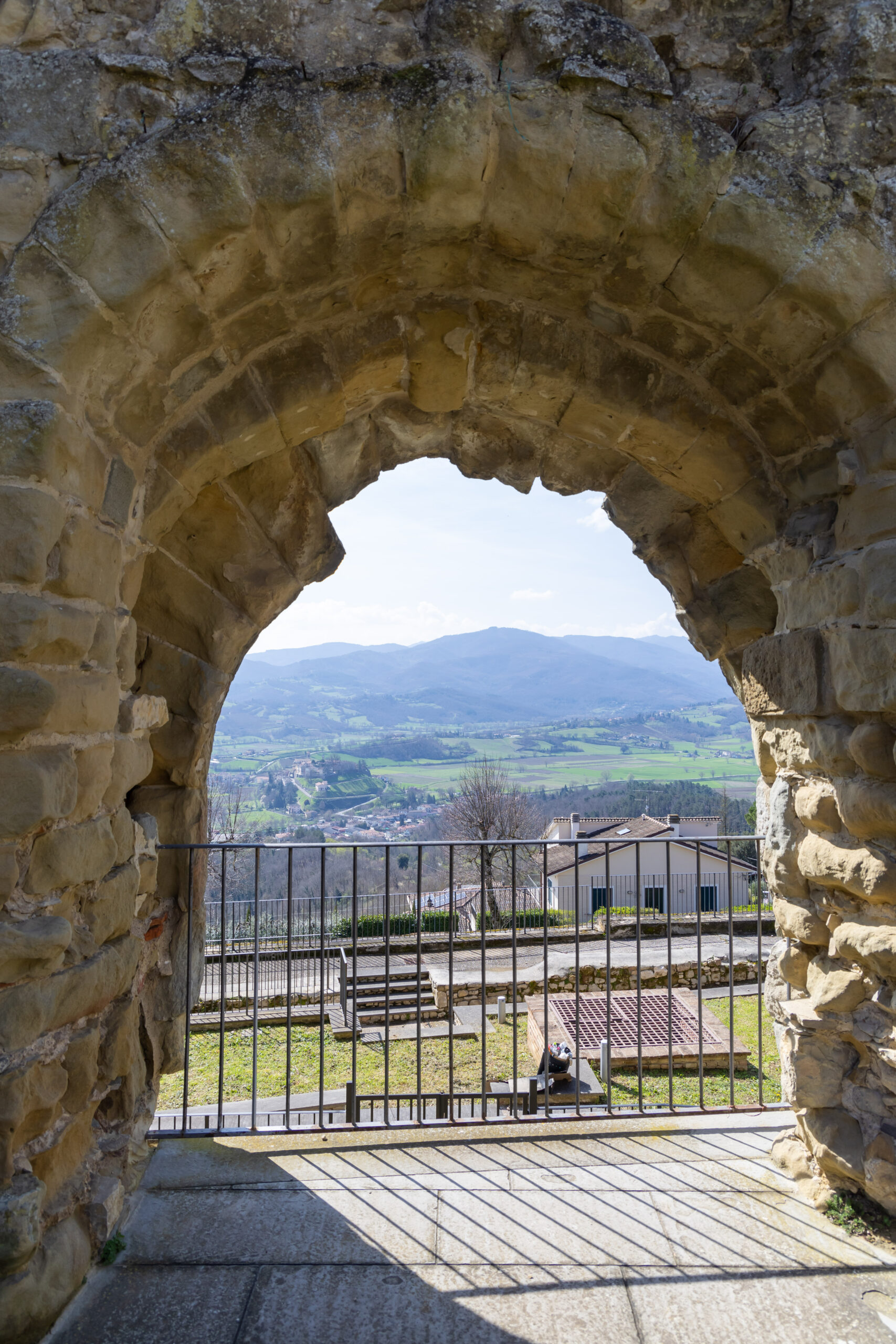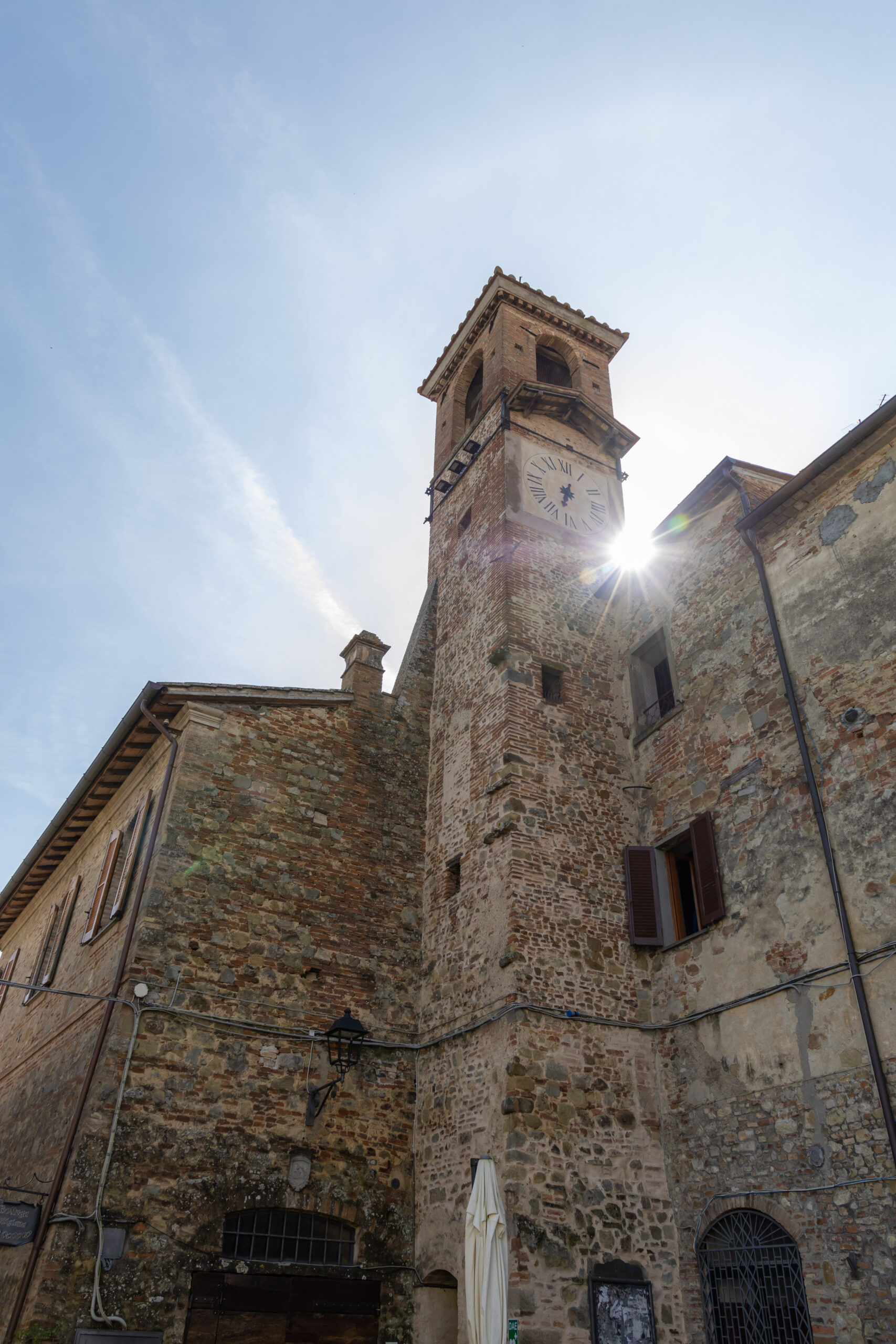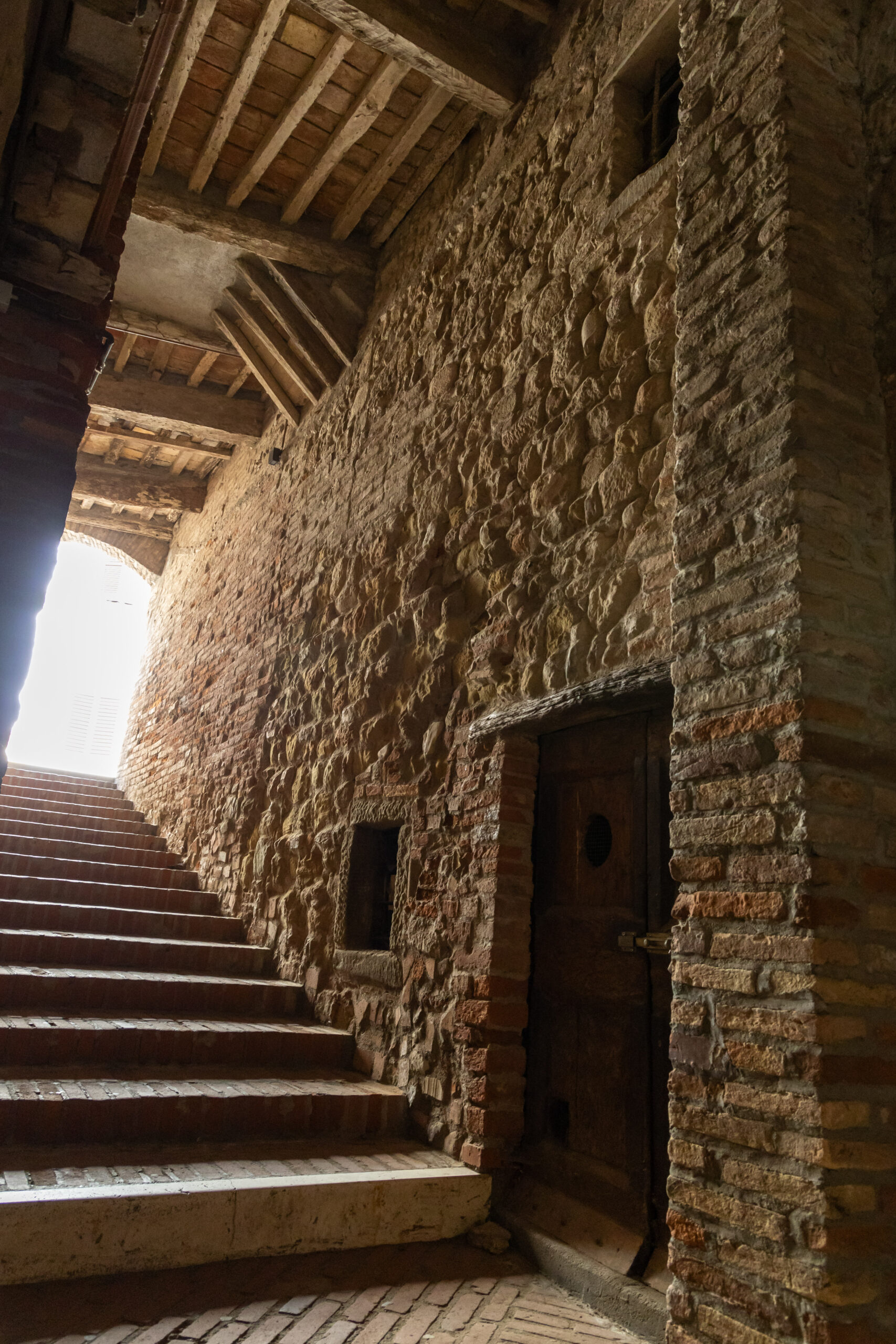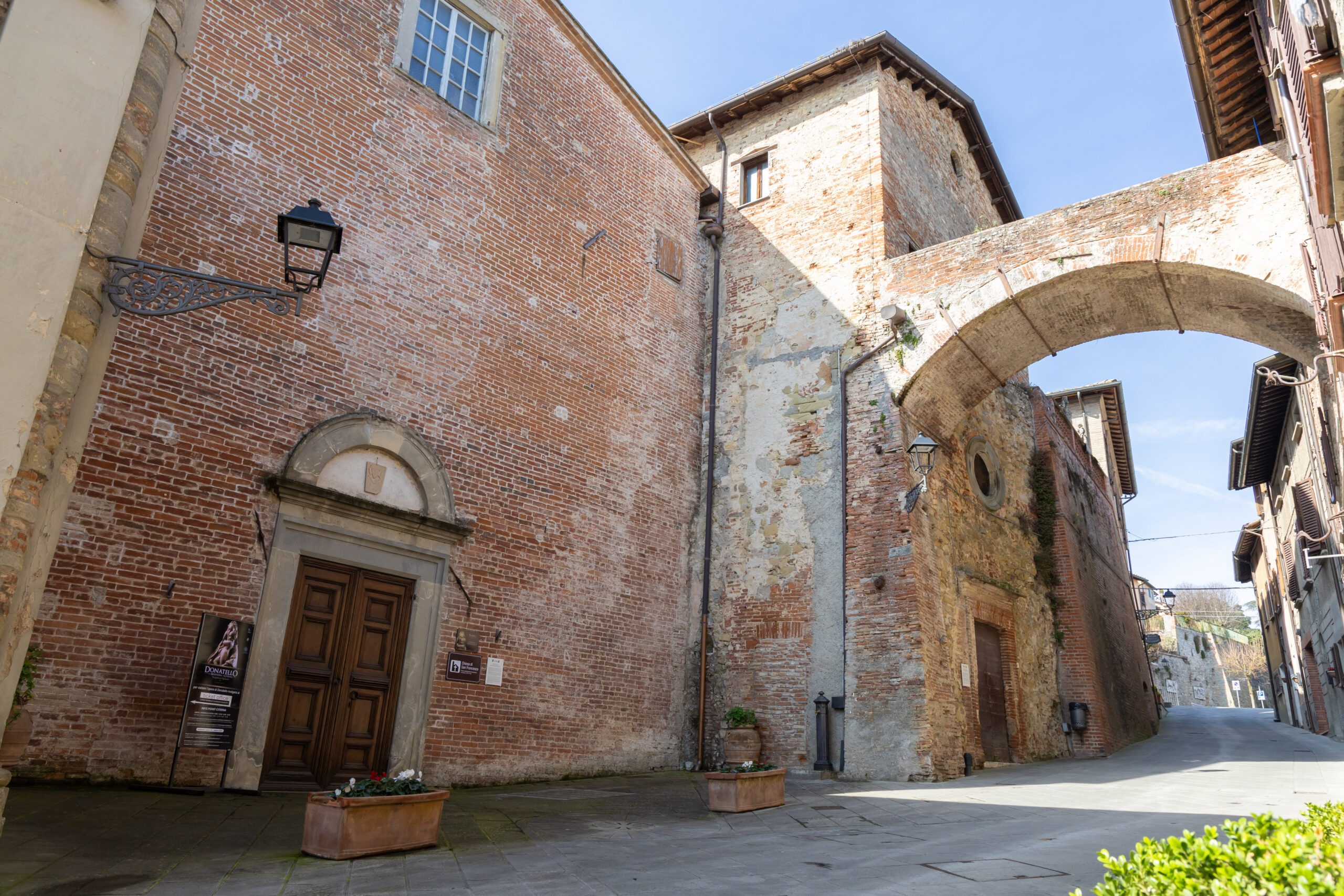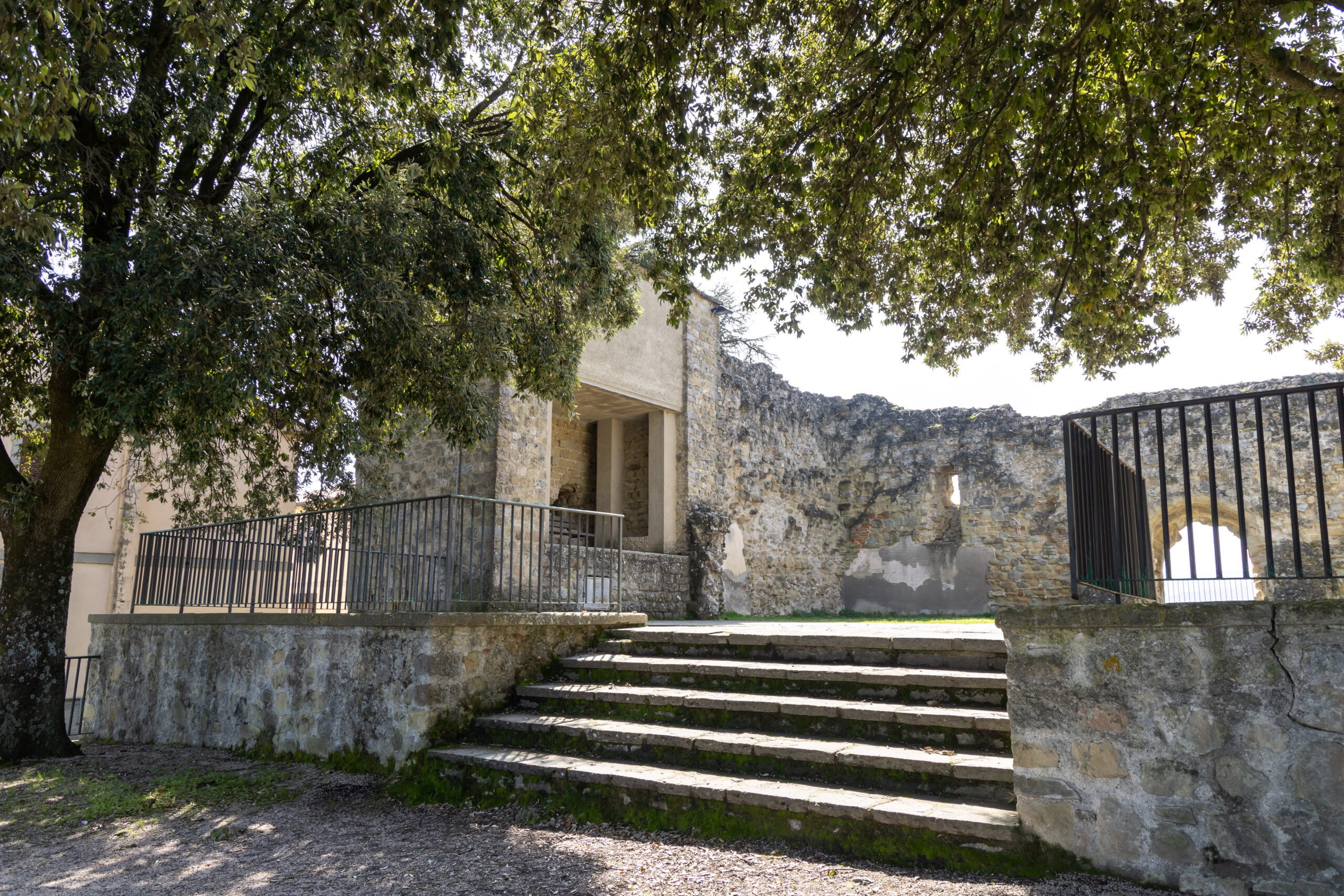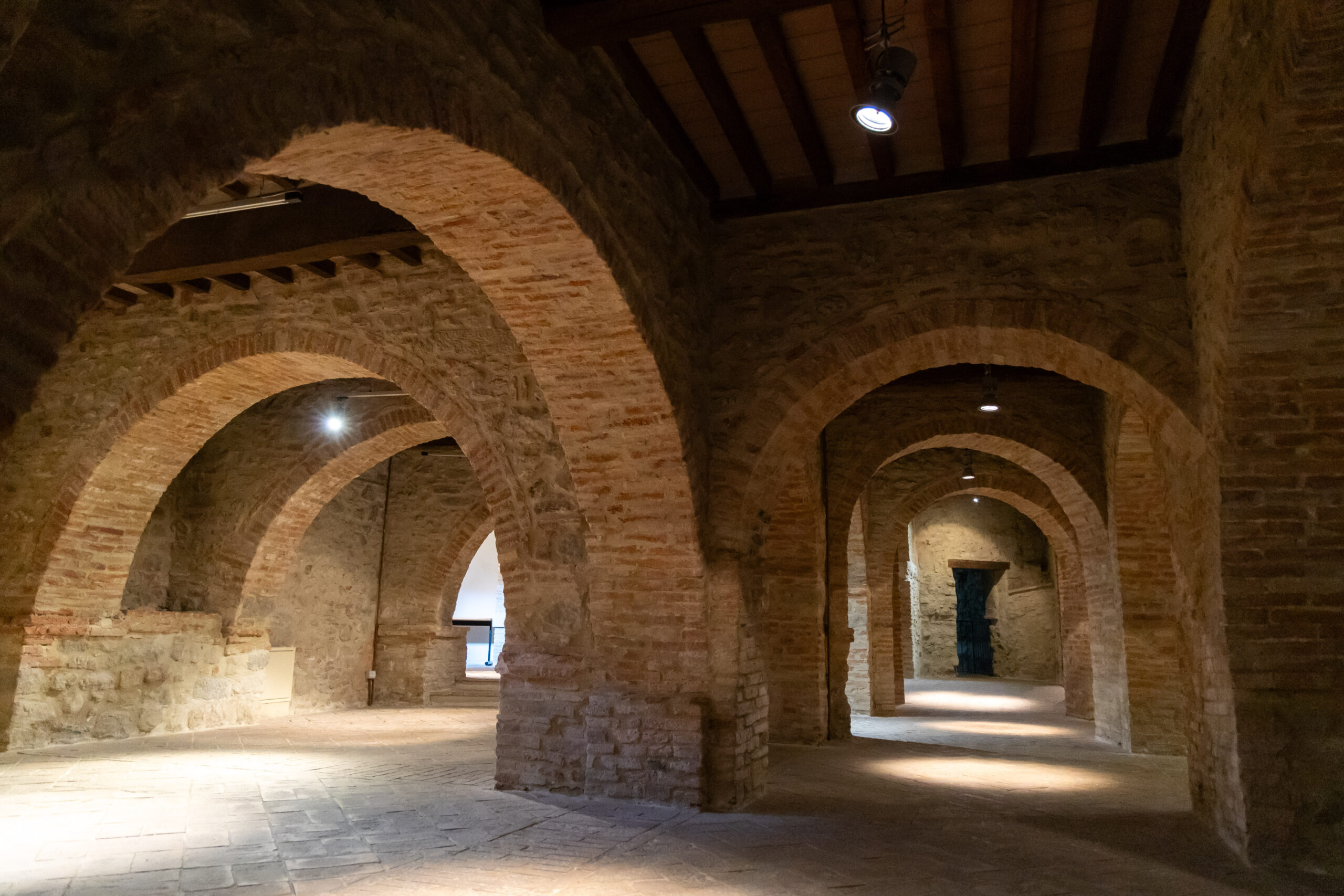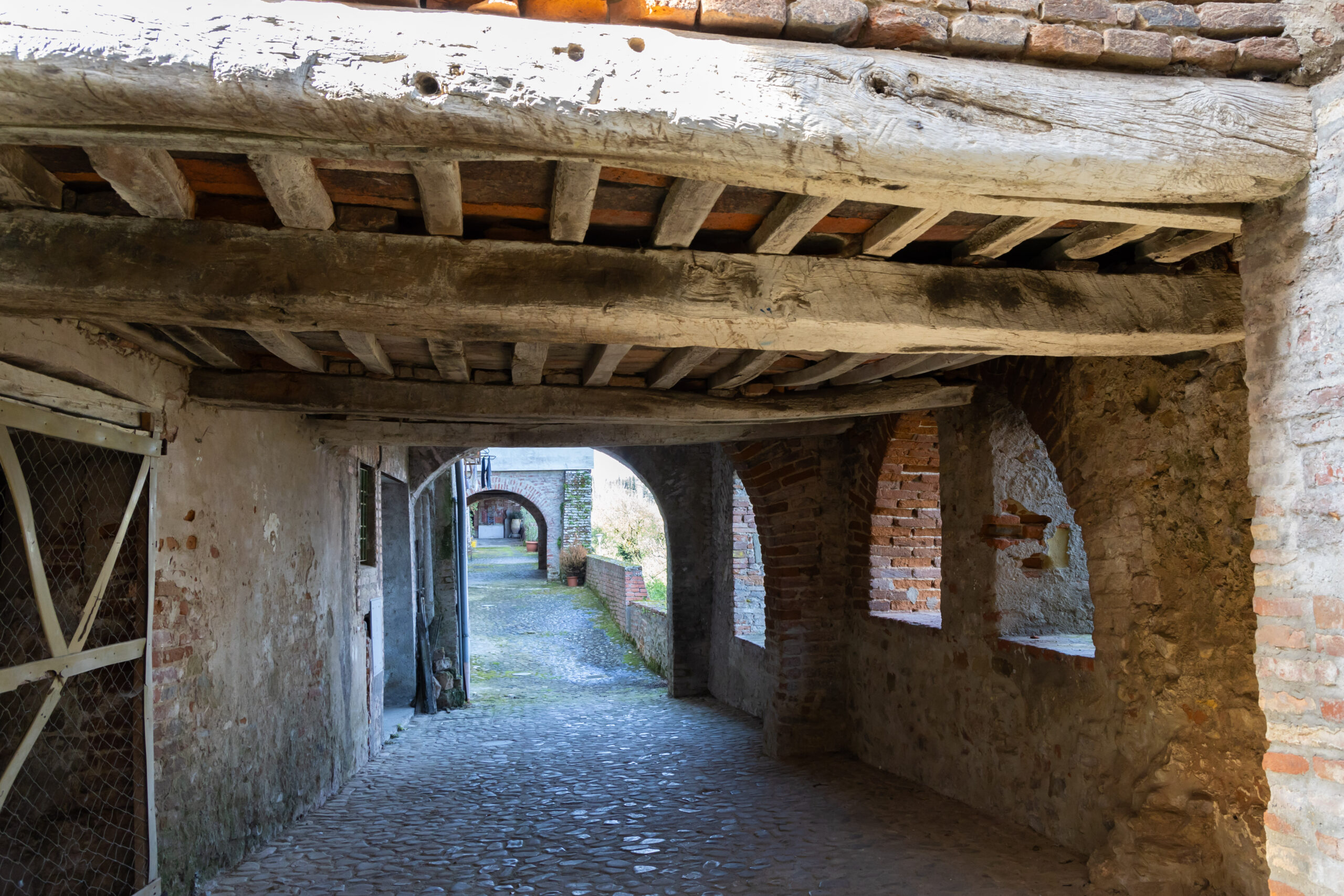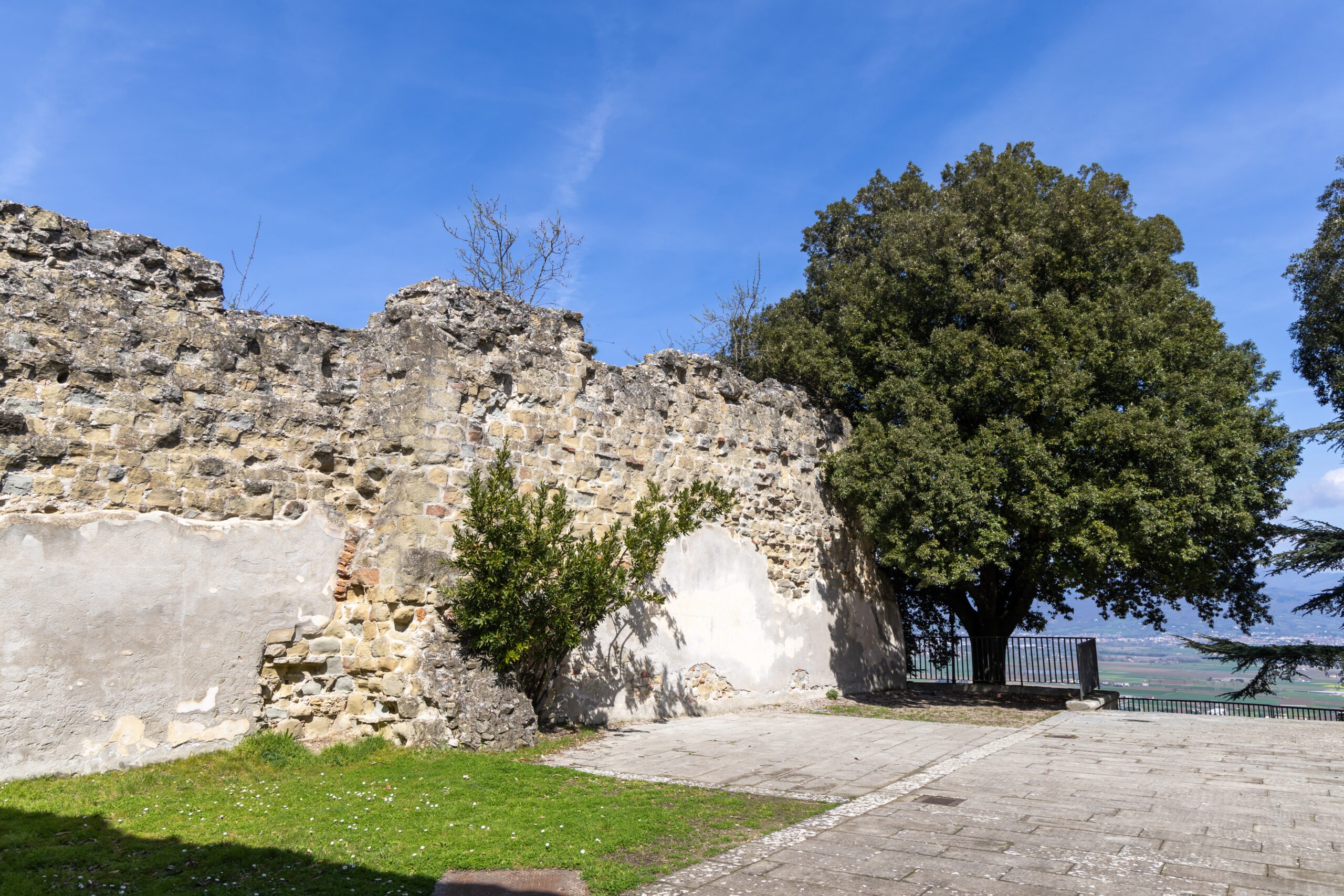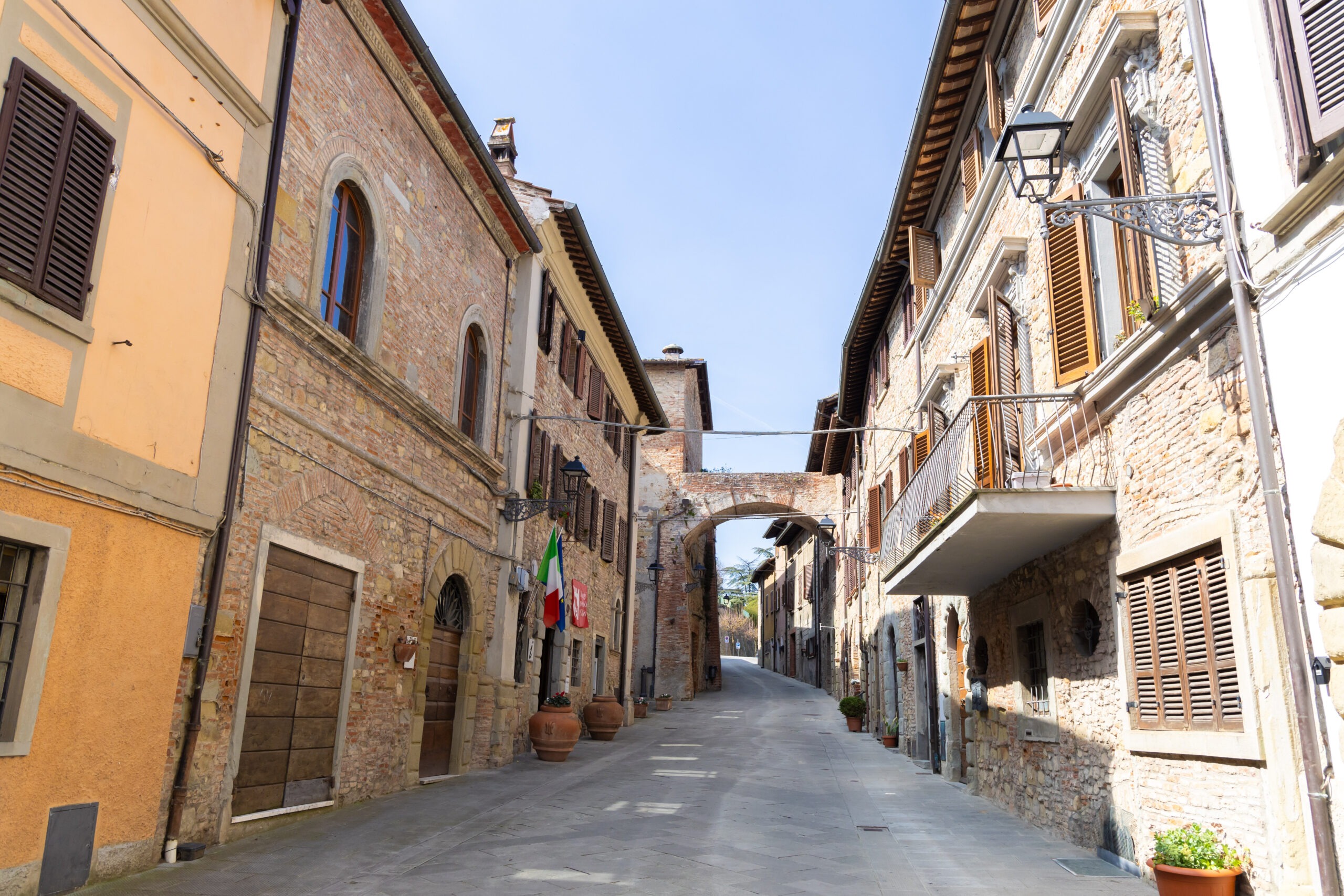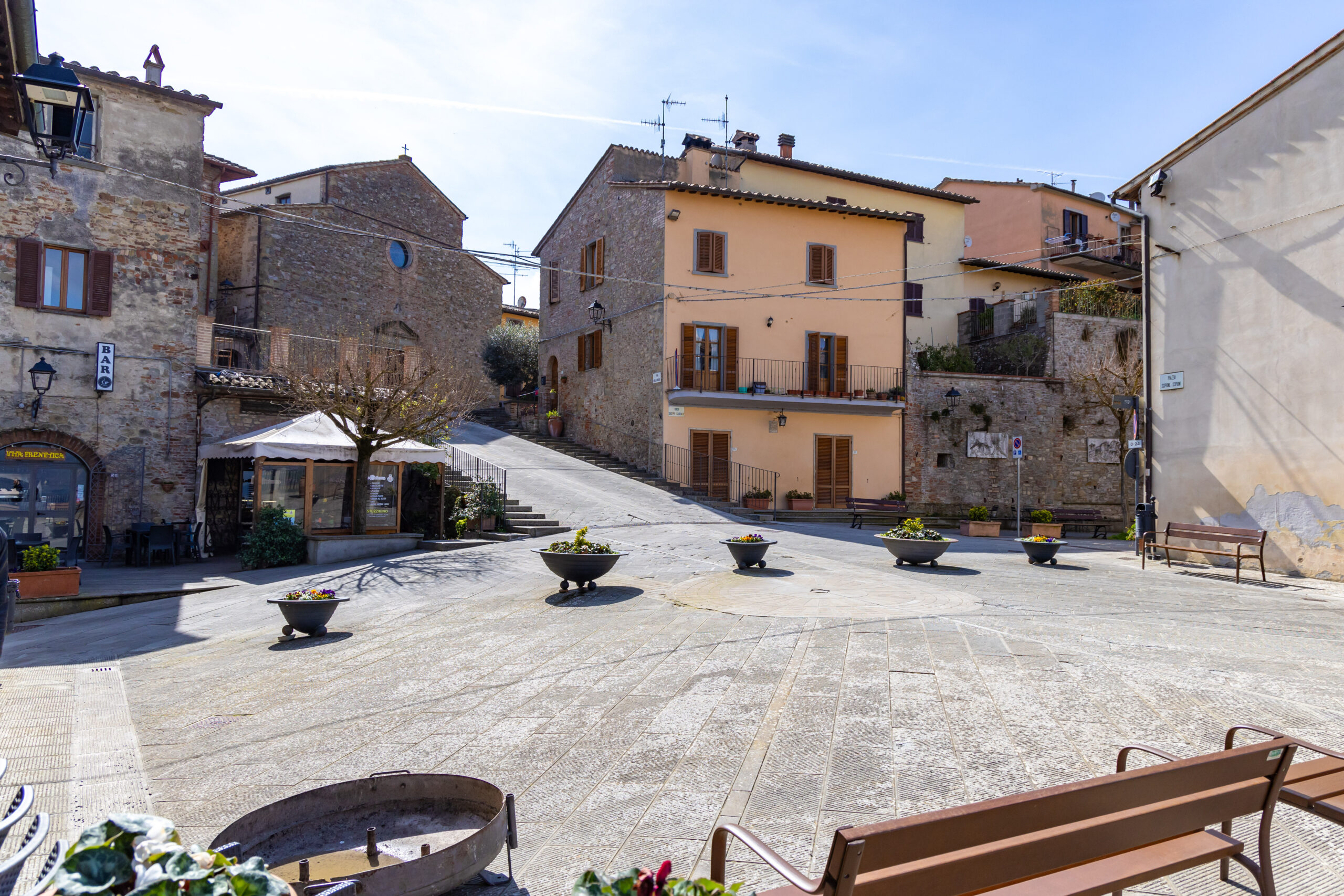THE VILLAGE
The free Municipality of Citerna, during its short period of independence (1231-1232), was located in the Chiasserini House and the adjacent palace (which faces today’s Scipioni square dedicated to the noble figure of General Scipione Scipioni who was born in Citerna in April 1867) until it moved to the former Franciscan Convent in the center of the village.
The Town Hall was accessed through spacious stairs; it retained the ancient prisons below and, on the side, the tower that houses an interesting 15th-century mechanical clock. The building, in its current appearance, is the result of numerous consolidation and restoration interventions that it has undergone over time. What characterizes it is the basement consisting of several rooms connected to each other by red brick arches that create a particularly suggestive network of passages.
Also on this level, corresponding to the space overlooking the Church of San Francesco and visible through a window, is one of the cisterns in which rainwater was conveyed from the roofs of the houses, useful for the water supply of the inhabitants.
SCIPIONI SQUARE
AND PANORAMIC TERRACE
Scipione Scipioni Square, dedicated to the distinguished general from Citerna who stood out in the Italo-Ethiopian war and the Great War. The Civic Tower is equipped with a wooden mechanical comb clock dating back to the 15th century. From the panoramic terrace in Scipioni Square, you can admire the entirety of the Upper Tiber Valley, making it one of the most picturesque panoramic spots in all of Umbria.
MEDIEVAL PATHWAYS
In the center of Citerna, just after the prosperi-vitelli house, a small arch leads to the path of the suggestive and perfectly preserved medieval walkway that runs along the perimeter of the walls with fully arched openings and wooden beams, giving life to a series of arcades that offer a truly impressive sight. Beyond the walls of this walkway, there is an ancient well called “Pozzo Vecchio”, above the Grand Cistern.
The "AMMASSI"
A particular feature of the town is its urban layout on two stacked levels, one above ground and the other underground. The latter, characterized by a system of tunnels and chambers located beneath the main street, is called Ammassi. Along this area, are located some cisterns dug underground which were used to collect rainwater and together constituted a complex system for finding and preserving water since there were no sources in the urban area. Of the seven cisterns found, the largest has a capacity of 450 m3 and is located under the former Convent of S. Francesco.
bontempelli Teather
Once named the “Teatro degli Accademici Discordanti Concordi” it is located near the country residence of the Vitelli family, probably built upon their request. Small but elegant, previously called “lo stanzone” (the big room) the theater underwent various transformations; in 1804, it was sold to Francesco Orlandini and he made the necessary modifications to turn it into a proper theater. In the restoration following the earthquake of 1917, a Liberty-style balcony was added. The theater, still active and owned by the municipality, consists in a small parterre and a single gallery. On the same square where the theater is located, you can admire the door that led to the Palazzo del Governo and the ancient prisons dating back to the 13th century.
the stronghold
The ancient part of Citerna is enclosed within the walls dating back to the 11th century and expanded between the late 12th and early 13th centuries; there are two main entrances: one to the south, Porta Romana, and the other to the north, Porta Fiorentina. The village, which had the character of a fortress with functions of observation over the surrounding lands, took on its current dimensions in the first half of the 1200s. The oldest section of this fortress consists in the stroghold, a Lombard fortification built under the dominion of Città di Castello in the year 1363, once the residence of the local lords, adjacent to the round tower that has become the symbol of the town. Above the Cassero in the past, there was a high tower that dominated the entire Tiber Valley, destroyed by the Germans as a reprisal during the World War II in July 1944.
S.eLISABETTA Monastry
The Franciscan Monastery is located near Porta Romana and dates back to 1545, when the premises of the Hospital of Santa Maria de’ Pellegrini and the annexed oratory were granted to the Franciscan sisters by Alessandro Vitelli, lord of Citerna. In 1598 the building was subject of expansion works and in 1833 renovation work was carried out. The entire complex was rebuilt after the destructive earthquake of 1917. The hexagonal-shaped church has a Pietà (14th century) that shows the now rigid Christ with his arms folded in his lap and the Virgin who supports his head with her right hand. In the upper part of the church, there is the choir where the cloistered nuns listened to the mass through grates, while to the right of the altar, can be observed the grating from where they received communion.
PROSPERI-VITELLI house
With splendid Renaissance windows overlooking the main street, this property was once the residence of the sacristan of the Immaculate Conception. Inside there is a magnificent 16th-century fireplace decorated with a stone architrave with a central mask and leafy tendrils. On the sides are the emblems of Angelo Prosperi and Costanza Argolanti. Above the fireplace, in a garland of fruit, is the Vitelli coat of arms within quadrants with crescent moons. On the sides of the hearth, where lovers once spoke from afar, there are two niches adorned with shells symbolizing fertility. For this reason, the fireplace is known as the “Fireplace of Lovers” as love declarations made here are said to unite couples forever.
Torrione malatestiano
Renaissance fortification built during the Malatesta period in Citerna in the 15th century as a defensive measure against possible attacks, also from new firearms. The particular oblique shape of the defensive wall and the cylindrical structure of the tower, atypical for the Umbrian-Tuscan area, recalls the typical style of fortified structures in areas dominated by the Malatesta.
church of santissimo crocifisso
Just outside the medieval village is the Church of Santissimo Crocifisso (the Holy Crucifix). The church is related to an ancient legend about the bleeding image of Christ. After finding it, the citizens built a small church that was entrusted in the early years of the 14th century to the Minori di Montesanto and later expanded in 1521. The building was damaged in the earthquake of 1917, but was acquired and restored by Conte Gaetano Manzoni, who transformed it into a villa. After his death, the nuns of the Monastery of San Benedetto of Città di Castello moved in and restored the church. The interior features a 13th-century fresco of the crucifixion, as well as other works of art attributed to the schools of Perugia and Florence.
map of the medieval village
To explore the historic center, an interactive map with points of interest is available.
gallery
